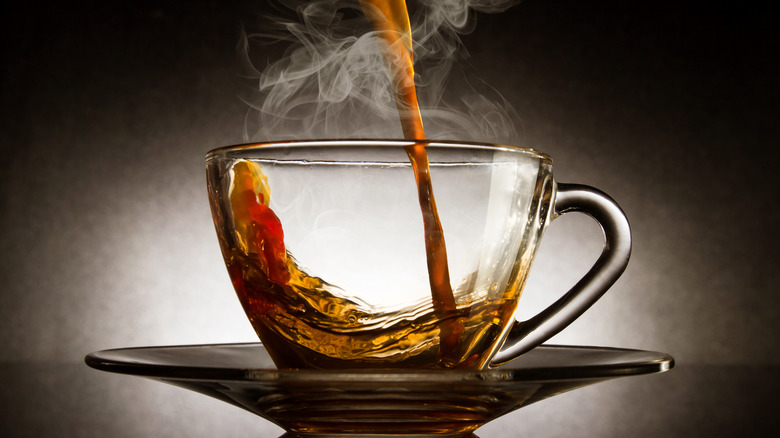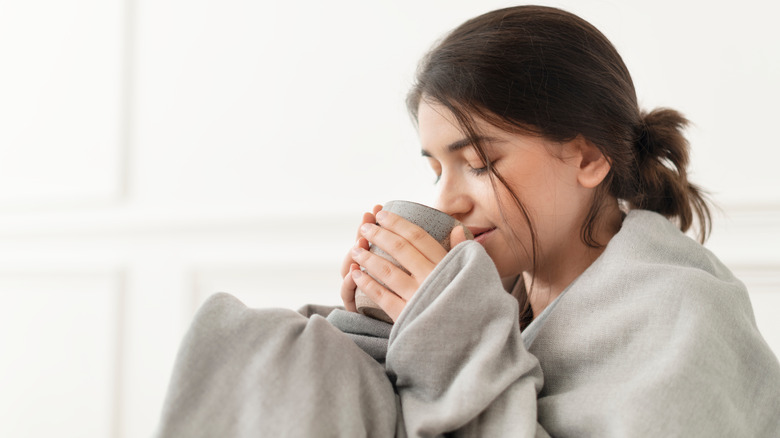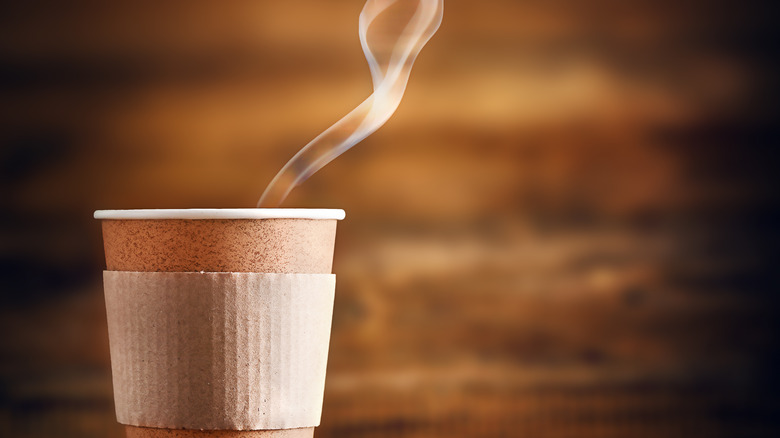The Reason You Need To Let Coffee Cool Before The First Sip
Some like it hot, as the saying goes. But when it comes to that steaming cup of morning or afternoon coffee, you might want to pause for a minute. It's not just to slowly welcome a new day or take a much-needed work break — your coffee is actually changing from the minute it exits the brewing process and enters your cup. A very small amount of time can make a big difference in your java enjoyment. As part of the "daily grind" we experience, those cozy-cup moments matter a lot.
That's why temperature is important. It's about more than avoiding a scalded tongue or hot spill in your lap while driving down the freeway. As it turns out, the temperature and timing of freshly brewed coffee significantly impacts the enjoyment of your favorite latte, cappuccino, or flat white. The heat factor of brewed coffee plays into the all-important flavor profile, regardless of your preferred beans or brewing methods. There's some science behind all this, so let's take a look at why you might want to cool things down before sipping and savoring that first heavenly drop.
Love at first sip
To love your coffee at first sip, go for the slow hand. In other words, let that hot liquid linger for a couple of minutes before it slides down your throat. Your taste buds will thank you, specifically the taste receptors inside those buds.
Red Rooster Coffee explains that taste receptors on your tongue respond more easily to liquids, including coffee, when it's in the temperature range of 68 to 95 degrees Fahrenheit, not more and not less. Since hot coffee is typically served at temperatures between 160 and 185 degrees Fahrenheit, per Science Direct, you're likely not getting the full flavor you want. In addition, all the other senses that affect how you taste something, including smell and "mouth feel," may be getting overwhelmed by dealing with the extra-hot liquid, diverting attention from the pleasure of consuming it. To top it all off, temps on the upper end of that range could indeed burn your mouth.
Conversely, if the coffee cools down too much, especially to room temperature, that lower heat starts a chain reaction affecting oxidation and pH balance, resulting in a less flavorful cup of coffee. Home Grounds notes how the flavor compounds deteriorate more the longer, they interact with air, and the heat can lead to oils, acids, and aromatics leaking into the hot water, all affecting flavor.
How to cool things down
To avoid the potential for overly strong or bitter coffee in your cup, you'll need to lower the heat before slurping it down. How you do that can have implications. As subtle as they may be, it all adds up to the perfect coffee experience, day in and day out.
In a series of informal studies revealed by Wired, a tester tried several ways of cooling off a lidded hot beverage, like the ones purchased at a coffee shop. Two methods are very common for everyday folks: The first is blowing into or over the little hole in the lid, and the second is to completely remove the lid, allowing heat to escape.
The result was a scientifically proven way of lowering the heat without compromising the cozy coffee warmth — by removing the lid. This is the quickest way to cool off a cup of hot coffee, allowing you to drink it before oxidization occurs and the taste begins to degrade. The reason it works so well is that heat rises, and water on the surface of the coffee evaporates, leading to lower energy water molecules and cooler coffee.
In other words, just take the lid off, let some heat escape, and drink down that earthy, flavorful cuppa joe while it's still warm. Your tongue will thank you — buds, receptors, molecules, and all.


